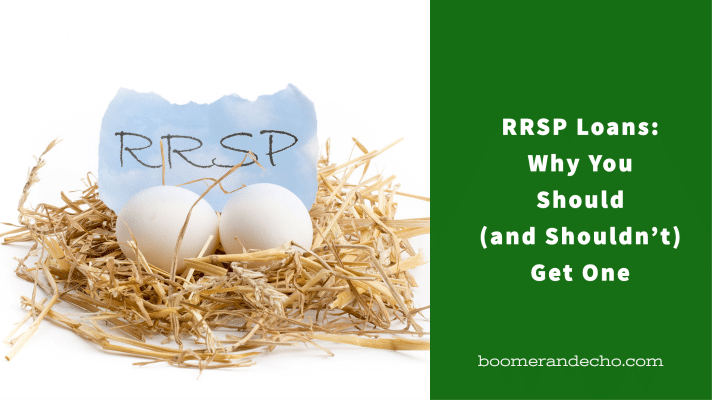
February is RRSP season, which for many Canadians means an annual trip to the bank to make an RRSP contribution before the deadline (March 1, 2023). It might be tempting to take out a loan if you don’t have the cash available to make a contribution – the rationale being that in one shot you’ll boost the savings in your retirement account and then use the deduction to increase your chances of getting a tax refund.
RRSP loans are great for banks because they get the loan, plus an investment on their books. No wonder lenders so heavily promote RRSP loans at this time of year.
Related: How to get more out of your RRSP this year
It’s not just Canada’s big five banks pushing RRSP loans. Online banks and lenders are also getting in on the act. Tangerine bank customers may have been surprised to find a pre-approved RRSP loan listed on their ‘My Account’ dashboard:
Most RRSP loans are used to make an RRSP contribution before the deadline in order to maximize contribution room and save on taxes. Interest rates on these loans can be obtained at or near prime rate, and the loan is paid back over a period of nine to 12 months – typically in monthly installments.
Borrowers beware. Financial institutions, both of the online and brick-and-mortar variety, employ salespeople and develop promotional materials, charts, and testimonials with the aim to convince you that a loan is a good idea. It might not be.
A chart that tries to highlight the tax savings on an RRSP contribution, for example, might show a borrower in the highest marginal tax rate to make the figures look good. If you happen to be in a lower tax bracket, you’ll get less of a refund.
One behavioural argument against taking out an RRSP loan is that if you didn’t have the discipline to contribute regularly to your RRSP throughout the year, how do you expect to stick to a loan repayment schedule over the next 12 months?
Financial author Talbot Stevens says our behaviour is the key to making the RRSP loan strategy successful.
“Even an undisciplined investor can benefit from the forced savings of paying off a loan – as long as it is well within their financial and emotional comfort zone,” he said.
Small top-up loans are generally accepted as a sound financial planning strategy and Stevens argues that once started, the RRSP loan becomes a forced savings plan, like a mortgage, that is not likely to be stopped.
With that in mind, let’s use an example of an investor who is in a 40% tax bracket, has $1,000 to contribute to her RRSP before the deadline, and has $5,000 in available contribution room.
Related: Are you putting dry pasta in your RRSP?
A short-term RRSP loan can top-up her annual RRSP contribution to the maximum. She simply borrows the extra $4,000 to make a $5,000 contribution and, at tax time, she’ll receive a $2,000 refund. The refund is not enough to pay off the entire RRSP loan, but she applies it against her loan and then pays off the remaining $2,000 balance over the next year.
This type of approach can boost your retirement portfolio in a hurry, but it can also lead to an endless cycle of borrowing ahead to catch-up on RRSP contributions. Can you afford to make regular RRSP contributions when you’re constantly making payments on last year’s contribution? In other words, at the end of the RRSP loan you might have to catch-up the contributions you didn’t make while you were repaying the loan.
At some point you’ll have to break the cycle. With that in mind, a debt-free approach to RRSPs would have you determine the amount you would have made in RRSP loan payments, then, use that amount to make regular RRSP contributions going forward. It may take a while longer to catch up but you’ll have no interest costs.
Final thoughts on RRSP loans
Using an RRSP loan can be a powerful strategy to boost your RRSP contributions and build your retirement portfolio. However, use caution when borrowing to invest and remember that this approach only works when you have the discipline to save your tax refund or use it to help pay off the loan.
Related: How an RRSP loan turned my $12,000 contribution into $20,000
Banks fuel our need for instant gratification with their well-timed marketing during RRSP season. But an RRSP loan isn’t necessary if repaying a loan doesn’t fit into your financial plan, or if you had the discipline to make regular contributions to your RRSP throughout the year.
“Truly disciplined investors don’t need the forced commitment of an RRSP loan. Those who acknowledge their tendency to procrastinate or become distracted from their retirement goal might benefit from the forced discipline of making payments on an RRSP loan,” says Stevens.
Well said.